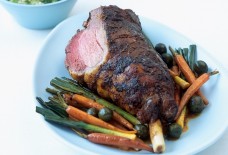Famous Cities in Morocco Series (Episode 6 of 13): Rabat
By: Claire Boyle / Arab America Contributing Writer
Introduction:
The country of Morocco has so many interesting towns and cities as well as beautiful landmarks. From the astonishing city of Casablanca to Marrakech, Fes, and Rabat, Morocco has everything one might hope to experience. These places boast historical monuments, such as the Hassan II Mosque, the Jemaa el-Fnaa, and many others. In this article series, we will be featuring cities and landmarks in Morocco that are historically and culturally significant. In this sixth installment, we will be traveling to Rabat, and then we will learn about the important religious architecture within the capital city of Morocco. These are the As-Sunna Mosque and St. Peter’s Cathedral in Rabat, Morocco. Finally, we will learn about the history of the cities themselves as well as some of their famous and associated landmarks.
Historical Synopsis and Background of Rabat:
Rabat is the capital city of Morocco. It is in the northwest area of Morocco; in fact, it is north of Casablanca, another major city. Rabat has an interesting and long history as it dates to the “twelfth-century under Almohad rule.” Rabat originally was not the capital city, but it has always been associated with power, administration, and the military. Under the Almohads, it was a military town. Fast forward to the seventeenth century, when we already know that most of Morocco became a “haven for the Barbary pirates.” Finally, in the 1900s, when Morocco became a French protectorate, the city was established as the capital city. During the period of French colonialism, Rabat was Morocco’s “administrative center,” and interestingly enough, the city has remained the capital even after the country achieved its independence in the 1950s.
Rabat is known for its beautiful architecture, including that it is one of the “four Imperial Cities of Morocco,” meaning that it has a palace where the king might live at some point during the year, and its medina (old city) is listed as a World Heritage Site. Finally, Rabat has a very large population as the combined totals of the urban city and its ‘suburbs’ number over “1 million people.”
Historical Landmarks—the As-Sunna Mosque and the St. Peter’s Cathedral:
As-Sunna Mosque:
We are going to explore the gorgeous religious architecture that is in Rabat, Morocco, and these include the As-Sunna Mosque, a worship center for Muslims, and the St. Peter’s Cathedral, a Roman Catholic church. These two worship centers are magnificently beautiful and they both illustrate how art and architecture are integral to expressing the specific religion as well.
The As-Sunna Mosque was built in the 1700s. This was when Morocco’s ruling family shifted (and remains so today) to the Alaouites. The mosque and especially its minaret stands as a symbol of the king, especially since it was originally built by one. In the mid-1960s, “King Hassan II’s fortieth birthday was coming up, so the minaret was rebuilt and restored ‘stone by stone,’” and it seems that the tower was also redirected to face a certain way on the street where the worship center is as well. The architecture is standard fare for Moroccan mosques, including that it has “a large rectangular courtyard, galleries, a prayer hall, ornamental pavilions, [and of course, the stunning] minaret.” Finally, it is a decorative marvel with numerous carvings and ornamentation throughout the mosque.
St. Peter’s Cathedral:
The Cathédral Saint-Pierre de Rabat or St. Peter’s Cathedral is a church in the Roman Catholic tradition. St. Peter’s is not quite as old as the As-Sunna Mosque being that the church was built from 1919-1921. It is located in downtown Rabat, and the church takes inspiration from the architectural style of ‘Art Deco’ which was very popular in the early twentieth century. Art Deco is a style that takes its influence from numerous art forms including the “bold geometric patterns of Cubism, bright colors, materials such as chrome, stainless steel, and plastic.”
Art Deco was inspired by the architectural styles of buildings seen in “China, Japan, India, Persia, ancient Egypt, and even Mayan art” in Latin America. Finally, because of the global perspective in art and architecture, “Art Deco is considered to be the first truly international style.” As one can see, St. Peter’s Cathedral has an architectural style that is consistent with Art Deco since the lines are very geometric and the various rooms in the church appear to look like cubes and box-like. Finally, St. Peter’s is an active congregation as mass is conducted there every other day.
Conclusion:
In conclusion, thank you for joining me on this fourth episode of the series “Famous Cities in Morocco.” This time we journeyed to the wondrous city of Rabat, which in my opinion is one of the most stunning places on earth due to its architectural style that is influenced by international elements including Arab, French, Moroccan, and others! Stay tuned for the next installment featuring the amazing city of Tangier! I hope you got to learn a little bit more about the majestic landscapes and landmarks that Morocco has to offer. If you are ever in Rabat, I highly recommend you visit the city itself, the exquisite As-Sunna Mosque, and finally, take a walk around the beautiful St. Peter’s Cathedral, you will not be disappointed!
This is the sixth installment in a series of thirteen focusing on cities in Morocco with an emphasis on its history and famous landmarks. Each article will feature a historical synopsis about the city and 2 to 3 significant landmarks. Keep an eye out for the next article about Tangier, Morocco coming soon. Thank you for reading!
To read episode 5 which featured the city of Essaouira, the Medina of Essaouira, the Essaouira Harbor, and its adjoined Fish Market, please click here!
Check out Arab America’s blog here!









